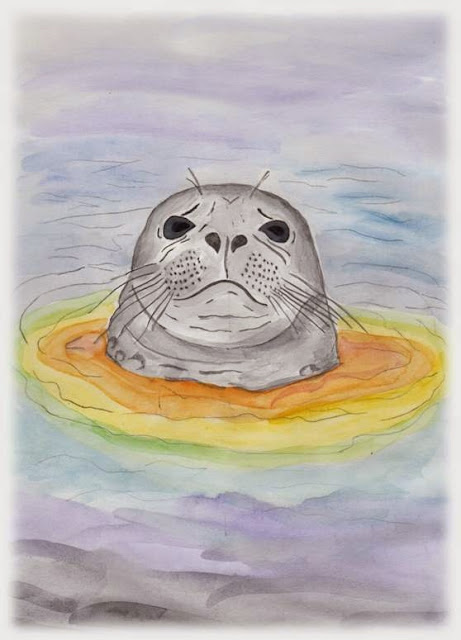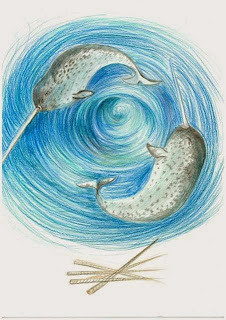5 октября 2015 г в рамках международного обмена между школой 213 и школой BFS в рамках экологической программы "JEM" провели экскурсию по центру города
Автор:
Татьяна Литвинова
0
коммент.
Международная экологическая конференция программы "JEM"
8 октября в рамках международной экологической программы "JEM" в школе №213 состоялась экологическая конференция при участии делегации школьников и учителей "Букингемской школы друзей" (г. Лахаска, штат Пенсильвания, США), посвящённая экологическим проблемам загрязнения атмосферы, воздуха.
С результатами практических исследований состояния воздуха в районе школы выступили представители Эко-клуба.
Ребята из Эко-совета школы рассказали о своих действиях в рамках программы "Эко-школы/Зелёный флаг".
Ученики 8 б класса предложили для обсуждения свой "Экологический кодекс".
Особый интерес у всех присутствующих вызвал доклад о результатах необычного эксперимента с применением компьютерных технологий, проведённого группой старшеклассников при изучении живописных полотен русских и зарубежных художников, отразивших в своих картинах различное состояние воздуха.
С особыми словами поддержки к участникам конференции обратились учителя "Букингемской школы друзей" и школы №213 Санкт-Петербурга, стоявшие у истоков создания международно экологической программы "JEM", действующей уже более 20 лет и объединяющей в настоящее время учеников школ из России, США, Австралии, Китая, Индии, Эквадора, Кении, Гавайев (шт. США).
В конце конференции все с увлечением работали над созданием продолжения экологической сказки, придуманной ученицей 4 класса 213 школы.
Совместная экологическая миссия ("JEM") - это пусть маленький, но очень важный вклад в сохранение мира, добра, взаимопонимания и ответственности за наш общий дом - планету Земля!!!
13 октября 2014г

Teachers’ conference “ The role of women
in the
developing of the formal education
at school”

Творческая работа Поповой Анастасии была посвящена исчезающим видам животных которые живут в воде. Мы предлагаем Вам прочитать ее сказки. Все рисунки к сказкам были выполнены ею самой.
From time immemorial there lived a marvelous seal in
the waters of Lake Ladoga. This fabulous animal has always had thick warm fur
skin, has always eaten chiefly fry and crustaceans, has always been harmless to
people. Undoubtedly that this seal has always had good-natured temper and a
cute snout. At that time fur on the back of our seal was dark grey and the
upper part of the body was light. And now I am going to tell you how light,
elongated rings appeared on the body.
 Since then the Ladoga seal has
been called the Ringed Seal. If the seal hadn’t lost her way and swum far away,
she wouldn’t have spoiled her fur skin. The Ladoga ringed seal inhabits the
largest lake in Europe - Lake Ladoga. But she is still afraid of her main
threats - water pollution and poaching.
Since then the Ladoga seal has
been called the Ringed Seal. If the seal hadn’t lost her way and swum far away,
she wouldn’t have spoiled her fur skin. The Ladoga ringed seal inhabits the
largest lake in Europe - Lake Ladoga. But she is still afraid of her main
threats - water pollution and poaching.
My
fairy-tale about the Ladoga seal that once became ringed.
One day
the seal swam to the small island hauling out in the ice. At the beginning of
March a cream-white pup was born in a snow cave. To feed her pup mother-seal
had to catch a lot of smelt, as the daily ration was about 3 kilograms. She
wanted her pup to be fed with fresh nutrient rich food. Once the seal was
following a school of fish and didn’t realize how she got to the mouth of the
Neva River and then to one of the channels of Saint-Petersburg. At this point
our seal-traveller got frightened she might have lost her way. She watched smelt
floating and didn’t notice she went so far. It’s high time our seal swam home
to her pup.
Having understood the situation our seal decided to emerge from the
water and look around. The water surface in the channel was covered with dirty
film of chemical waste of one of the chemical plants of our city. When aggressive liquid got to
the beautiful fur skin of the seal, the animal felt burning pain, got scared
and at top speed zoomed off. But chemical injuries which the pet
had got remained at her fur skin forever. Her fur skin got covered with light,
elongated rings, because some parts of the fur were discolored because of the
chemical substance.  Since then the Ladoga seal has
been called the Ringed Seal. If the seal hadn’t lost her way and swum far away,
she wouldn’t have spoiled her fur skin. The Ladoga ringed seal inhabits the
largest lake in Europe - Lake Ladoga. But she is still afraid of her main
threats - water pollution and poaching.
Since then the Ladoga seal has
been called the Ringed Seal. If the seal hadn’t lost her way and swum far away,
she wouldn’t have spoiled her fur skin. The Ladoga ringed seal inhabits the
largest lake in Europe - Lake Ladoga. But she is still afraid of her main
threats - water pollution and poaching.
Творческая работа Поповой Анастасии.
Since
time out of mind in the Arctic waters there lived wonderful animals – sea
unicorns also known as narwhales. They were strange creatures with long tusks
protruding from their heads. Like an underwater unicorn they had a kick-ass
facial horn. It was thought that narwhales could beat a polar bear in a fight.
They were so awesome that made feel terrified ancient sailors. Sailors had
always been afraid of narwhales because they could easily gore wooden boats and
even shipboards.
My
fairy-tale about dreadful and helpless narwhales.
At their own peril and risk people hunted these
animals with harpoons because of their costly meat and tucks. In medieval
times, its long, straight tusk was often given to royalty, passed off as a
“unicorn horn.” From tucks people made bijouterie, combs, and musical
instruments. One day the elder narwhale, the head of the tribe, ordered their
relatives to take the tucks off and hide them away. The animals knew if they
hadn’t had corns, people would have stopped killing them. So they agreed with
the offer of their elder narwhale, take off their tucks and put them into a
starting hole at the bottom of the sea. Having done that, narwhales could save
their lives. Now practically no one could distinguish narwhales from seals or
sea-cows. That is why narwhales have still been living in the Arctic waters and
only in red-letter days narwhale put on their tucks. The narwhales knew that
their tucks made them extremely vulnerable.























